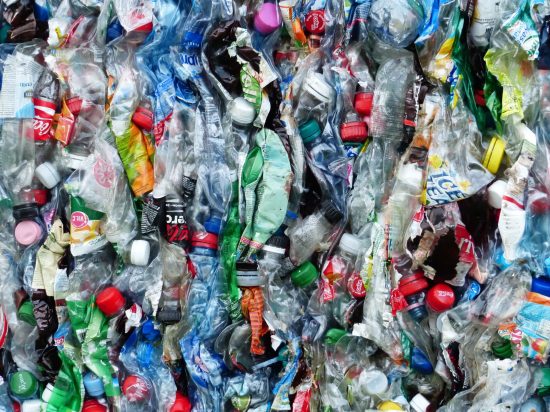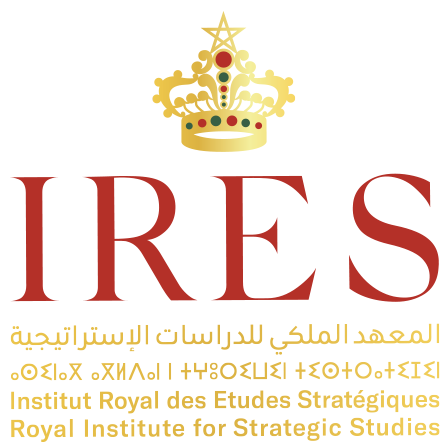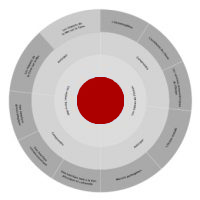ANNUAL SURVEY PAPER 2023
COASTAL ARTIFICIALIZATION
- 09/10/2023
Coastal artificialization* The process of transforming natural coastal areas into artificial spaces (buildings, infrastructure, industrial zones, …), often as part of urban, industrial, commercial or tourist development, leading to the degradation of natural resources.
Source: Milieu Marin France. “L’artificialisation du littoral”. April 2020.
https://www.milieumarinfrance.fr/Nos-rubriques/Activites-et-usages/Artificialisation-du-littoral/ refers to the transformation of natural coastal areas into spaces developed for housing, commerce, tourism or other human activities (construction of buildings, roads, harbors, dykes; modification of beaches, dunes and wetlands).
A rising trend worldwide, it is particularly noticeable in tourist areas, coastal towns and industrial zones, leading to biodiversity loss, beach erosion and increased vulnerability of coastal communities to climate change.
In light of these major environmental and human implications, it is critical to reconcile economic development with coastal preservation. This requires effective coastal management policies, careful planning and public awareness.
Morocco, with 3,500 kilometers of Atlantic and Mediterranean coastline, is directly exposed to this situation, which has already reshaped many sections of its coastline. The country has taken steps to manage its coastal zones, notably by creating protected areas and promoting sustainable tourism, but the destruction of natural habitats and coastal erosion continue.
GLOBAL FRESHWATER CRISIS
- 09/10/2023
The global freshwater crisis reflects the growing shortage of safe, accessible drinking water worldwide.
Population growth, urbanization, high-intensity agriculture, industrialization, water pollution, waste and climate change are just some of the factors fuelling this crisis: freshwater resource utilization has grown nearly 1% per year over the past 40 years. In 2020, 26% of the world’s population (2 billion people) did not have access to safe drinking water and 46% (3.6 billion) did not have access to adequate sanitation.
The UN World Water Development Report 2023 estimates that 2-3 billion people face water shortages for at least one month of the year. Sub-Saharan Africa, the Middle East, South Asia and portions of Latin America are hit the hardest.
The situation will likely worsen in the future, notably in cities: the number of people in urban areas facing water shortages worldwide is projected to rise to 1.7 to 2.4 billion in 2050, from 933 million in 2020, as demand for water continues to grow in the face of dwindling supply.
Morocco, in a semi-arid region, is hard hit by the freshwater crisis, with worsening drought, groundwater abuse and a water management system that is slow to adapt to demand. Despite measures taken to better manage water resources (National Program for Drinking Water Supply and Irrigation), the water crisis remains a major concern for the country.
CIRCULAR ECONOMY
- 09/10/2023
This economic model aims at minimizing waste and maximizing the reuse and recycling of resources.
The circular economy*The circular economy strives to ensure sustainable production by minimizing resource consumption, waste, and waste generation. It relies on building virtuous cycles of reuse and recovery, thus promoting optimal resource use.
Source: Institut National de l’Economie Circulaire (France). “L’économie circulaire : Une économie créatrice de valeur sociale, économique et environnementale”.
https://institut-economie-circulaire.fr/economie-circulaire/ is gaining acceptance worldwide as a potential solution to environmental challenges such as the over-consumption of resources, pollution and climate change. A number of corporations, cities and countries (Netherlands, France, China, Finland) are adopting circular economy principles, with initiatives ranging from recycling and reuse to eco-design and the sharing economy.
The transition to a circular economy is however still in its infancy and faces a set of obstacles that need be addressed through a profound rethink of production and consumption, significant investment in new technologies and infrastructure, and appropriate regulations and incentives.
A circular economy could alleviate a few of Morocco’s environmental challenges, particularly waste management, energy consumption, and water scarcity. It also brings new economic opportunities, in recycling, renewable energy, and sustainable agriculture. The Kingdom, having already taken measures in this direction, notably with the national waste recovery program, should resolutely embark on a comprehensive circular economy policy.
METROPOLIZATION
- 09/10/2023
Metropolization*The growing concentration of populations, economic activities and strategic functions in large urban agglomerations, spurred by a variety of factors, including economies of scale and agglomeration, comparative advantages, network accessibility needs, …
Source: Géoconfluences. “Métropolisation”.
https://geoconfluences.ens-lyon.fr/glossaire/metropolisation/ is a process by which cities, particularly large metropolises, become major centers of population, economic activity, and power. This implies a growing concentration of resources, infrastructures, innovations, and opportunities in these urban areas, as well as supply and waste management issues.
A second wave of metropolization is underway (after that of the West) in developing countries, driven by the rapid urbanization of cities such as Lagos, Mumbai, Sao Paulo, and Jakarta. The number of global metropolises is set to rise from 33 in 2023 to 47 in 2050, with an additional 4 in Africa and 7 in Asia.
A source of socio-economic inequality, both between cities and rural regions and within cities themselves (slums), metropolization also puts pressure on urban infrastructure and the environment, notably housing, transport, pollution and waste management. Hence the urgency for sustainable and inclusive management of the growth in these urban areas.
Casablanca, Morocco’s major metropolis, not only draws large portions of the country’s population, investment and economic activity, but also attracts foreign economic operators. This creates challenges for the city in terms of congestion, housing, public services, and quality of life. Other Moroccan cities, including Marrakech, have experienced metropolization. The Kingdom is therefore after solutions enabling it to manage the growth of its metropolises while ensuring equity and sustainability.
CLIMATE REFUGEES*
- 09/10/2023
Environmental migrants or climate displaced people are those forced to leave their homes due to sudden or gradual environmental changes (sea level rise, droughts, floods, hurricanes) that impact their lives and/or livelihoods.
From 2009 to 2018, nearly one person worldwide was displaced by climate – or weather-related events – every second, that is over 22.5 million people a year. Hurricanes, floods and drought forced 7.4 million Africans to leave their homes in 2022.
The plight of climate refugees is a growing global concern. The World Bank calculates that some 216 million people in the developing world could be internally displaced by 2050 as a result of climate change (mainly in sub-Saharan Africa, South Asia and Latin America). Such hotbeds of internal climate migration could appear as early as 2030.
This surge in the number of climate refugees could lead to a humanitarian crisis (all the more so as, in the absence of an international legal definition of climate refugees, they do not enjoy the same protection as other refugees), conflicts over resources and geopolitical tensions.
Morocco is concerned in two ways: today, as a transit country for migrants, including climate refugees from sub-Saharan Africa bound for Europe; and tomorrow, as a country of internal displacement resulting from climatic effects (desertification, drought, rising sea levels). It therefore has a key role to play in managing this emergence and in finding sustainable solutions.
CRITICAL THRESHOLD FOR PLASTIC POLLUTION
- 09/10/2023
The build-up of plastic substances in the environment has adverse effects on wildlife and humans. This plastics pollution is primarily caused by consumer waste, such as water bottles, plastic bags, food packaging, and fishing nets. Breaking down very slowly, plastic lingers in the environment for centuries, and plastic micro-particles are now detected in even the most remote parts of the planet as well as in human placentas.
Plastic pollution is getting worse. Up until 2016, some 8 million metric tons of plastic ended up in the oceans every year, with devastating consequences for marine life: Should current trends persist, the weight of plastic in the oceans will exceed that of fish by 2050. 9 to 12 million metric tons were dumped in 2021. This figure could reach 29 million metric tons by 2040. Plastic production also contributes to climate change, through greenhouse gas emissions.
In 2016, Morocco took the bold step of banning single-use plastic bags. The problem however persists with other forms of plastic waste and marine plastic pollution. Efforts to manage and curb plastic pollution are all the more imperative as plastics and polymer imports could double by 2030, with plastics now Morocco’s chemical industry’s second-largest processing sector.


